Clasp prosthesis on attachments
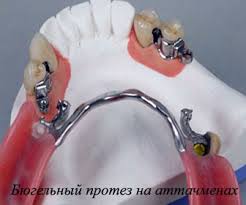
Clasp prosthetics on attachments - Currently it is the modern and most popular orthopedic design of the removable type.
Clasp dentures give the patient a chance to acquire a beautiful smile. The design is attached with locks (attachments) to artificial crowns, an implant or a tooth root.
The clasp prosthesis on attachments is fixed and the main part of the load is distributed on the abutment teeth, due to the presence of a metal arc-shaped frame made of a good alloy.
Thanks to attachments, a removable prosthesis is fixed in the oral cavity, its retention and stabilization is ensured.
The design on attachments is securely held on the prosthetic bed, while the elements of the clasp prosthesis interact physiologically.
Types of Attachments
According to the manufacturing technology, attachments can be divided into groups:
- Metal - they are standard.
- Plastic - are made individually.
According to the location of the castle, attachments are:
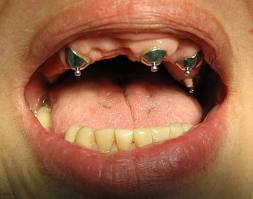
- Extracoronary.
- Intracoronal.
- In the form of root pins.
- Crossbar.
- Barbell.
- Spherical.
- Rail.
The most common attachment attachment is spherical.
- By the type of transfer of the masticatory load on the structure and supporting teeth, attachments can be: rotational, rigid, articulated.
- By the method of connection: magnets, mechanical retention, screws, friction.
Attachment structure

The clasp structure consists of a frame made of metal and an artificial gum having the appearance of a saddle. The design is attached to the abutment teeth using attachments.
Attachments consist of parts:
- Patrices - which is located on the abutment, crown, implant or root.
- Matrix - located on the dental structure.
After donning the structure, attachments snap into place, which ensures reliable fixation.
When installing the structure, it must be remembered that cranked teeth cannot serve as a support for the prosthesis.
Among attachments, the most popular is the spherical mount, where the ball is a metal ball and the matrix is made of plastic in the form of a cavity. The connection of the parts takes place by embracing the ball by the matrix and snapping.
The clasp design on attachments with spherical fastening is in great demand due to its reliability and naturalness, in the case of a successfully selected shade of artificial teeth.
Video: “Clasp prostheses on transom locks”
Benefits
The advantages of attachments on attachments include the following:
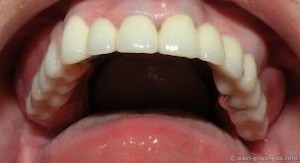
- High aesthetic effect.
- Stable and strong fixing structure.
- Uniform distribution of loads on the surface of supporting teeth.
- The materials that attachments are made of are standard, so you can choose a replacement.
- Ease of use.
- The feeling of comfort when using.
- The prosthesis is not visible to others, so it has a high aesthetics.
- A shorter period of getting used to the design.
- The ability to replace structural components.
- No problems with diction.
- Long service life.
- Quickly getting used to the design of this type.
- The frame structure is made of biocompatible material.
disadvantages
The clasp design on attachments has a number of disadvantages:
- The price of the construction is quite high.
- Plastic attachments require frequent replacement.
- Repairing attachments is time-consuming, associated with high material costs, in some cases impossible.
- When installing attachments, sometimes grinding and depulpation of healthy teeth is required.
Indications
The installation of clasp prostheses on attachments is preferred in the following cases:
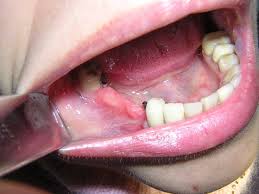
- Unilateral and bilateral end defects of teeth.
- Multiple defects in the dentition.
- Impaired chewing and diction due to the absence of one or more teeth.
- Pathological abrasion of teeth.
- Periodontal disease.
- With pronounced maxillary tubercles.
- The presence of a flat sky.
- Diabetes mellitus.
- Blood diseases, expressed by a decrease in the stability of the capillaries of the gums.
- The inability to install a permanent denture.
- Tooth grinding (bruxism).
- Malocclusion.
- Bad aesthetics.
- Atrophic changes in the alveolar processes, in the absence of the possibility of using a laminar denture.
Contraindications
The use of structures on attachments is impossible:
- In the presence of defects in the supporting teeth.
- Periodontal disease.
- The presence of low clinical crowns of teeth. The placement of locks on fangs and incisors is difficult due to the small width of the lingual-buccal gap.
Reviews
Testimonials of some patients who use arch prostheses on attachments:
- I put a clasp prosthesis on attachments three years ago, I still use it with pleasure. He doesn’t rub anywhere, fastens quietly and easily, I don’t take off at night. The design is comfortable and light.
- With age, I lost a lot of teeth. A year ago, she placed a clasp prosthesis on attachments. I got used to this design for a long time. The prosthesis is firmly fixed, lightweight, easy to use. I don’t take off for the night. The teeth look like real ones.
- I put a denture on attachments a year and a half ago. Everything was fine. Two months ago there were complaints of pain in the region of the supporting teeth in the lower jaw, and a little later they became mobile.
- I have been suffering from periodontal disease for more than ten years. I use a clasp prosthesis on attachments. I got used to it for a very long time. The dentist advised not to remove the structure at night. Now everything is fine.
- He put a removable clasp prosthesis on attachments. I got used to it in a week. The design looks spectacular, the mouth is full of snow-white teeth. I had no such teeth even at a young age.
Prices
The cost of clasp prostheses on attachments is quite high. It depends on the quality and quantity used for the manufacture of the construction material, the complexity of the work.
The price of a one-sided construction will be from 5500 to 83000 rubles, and a two-sided construction - from 19000 to 124000 rubles.
The price includes the price of the prosthesis, attachments and crowns.
| Type of arch prosthesis | Price in rubles |
| Denture with 2 to 3 clasps | 39000 |
| Splint construction | 39500 |
| Prosthetics of a single-end defect with attachment "MK-1" | 70000 |
| Design with attachment for double-ended defect “MK-1” | 82000 |
| Prosthetics on attachments "Bredent" | 72000 |
The final cost of manufacturing a denture using this technology will be determined by the city, the status of the dental clinic.
Before and after photos
 |
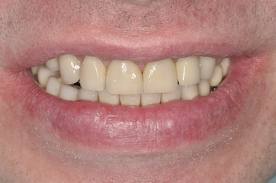 |
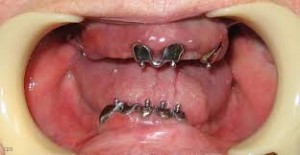 |
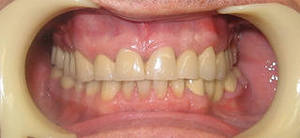 |
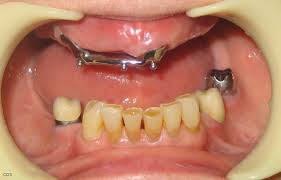 |
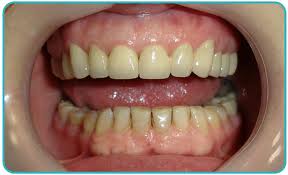 |